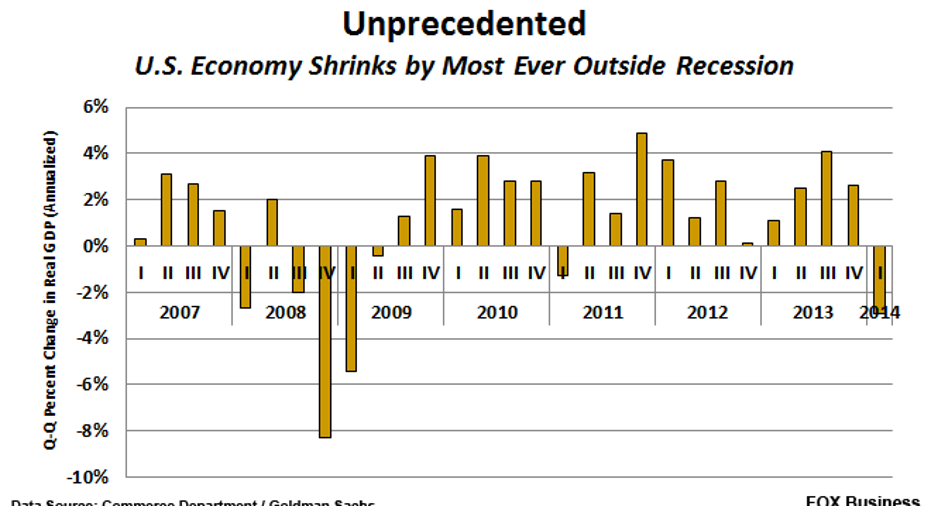U.S. Economy Shrinks By Most Since Great Recession in 1Q

The U.S. economy contracted at a much steeper pace than previously estimated in the first quarter, but there are indications that growth has since rebounded strongly.
The Commerce Department said on Wednesday gross domestic product fell at a 2.9 percent annual rate, the economy's worst performance in five years, instead of the 1.0 percent pace it had reported last month.
While the economy's woes have been largely blamed on an unusually cold winter, the magnitude of the revisions suggest other factors at play beyond the weather. Growth has now been revised down by a total of 3.0 percentage points since the government's first estimate was published in April, which had the economy expanding at a 0.1 percent rate.
The difference between the second and third estimates was the largest on records going back to 1976, the Commerce Department said.
Economists had expected growth to be revised to show it contracting at a 1.7 percent rate. Sharp revisions to GDP numbers are not unusual as the government does not have complete data when it makes its initial and preliminary estimates.
The latest revisions reflect a weaker pace of healthcare spending than previously assumed, which caused a downgrading of the consumer spending estimate. Trade was also a bigger drag on the economy than previously thought.
The economy grew at a 2.6 percent pace in the final three months of 2013. With the first quarter in the rear view and the April-June period looking stronger, investors are likely to ignore the report.
Data such as employment, manufacturing and services sectors point to a sharp acceleration in growth early in the second quarter. However, the pace of expansion could fall short of expectations, which range as high as a 3.6 percent rate.
Economists estimate severe weather could have slashed as much as 1.5 percentage points from GDP growth in the first quarter. The government, however, gave no details on the impact of the weather.
Consumer spending, which accounts for more than two-thirds of U.S. economic activity, increased at a 1.0 percent rate. It was previously reported to have advanced at a 3.1 percent pace.
Exports declined at a 8.9 percent rate, instead of 6.0 percent pace, resulting in a trade deficit that sliced off 1.53 percentage points from GDP growth. Weak export growth has been tied to frigid temperatures during the winter.
Businesses accumulated $45.9 billion worth of inventories, a bit less than the $49.0 billion estimated last month. Inventories subtracted 1.70 percentage points from first-quarter growth, but should be a boost to second-quarter growth.
A measure of domestic demand that strips out exports and inventories expanded at a 0.3 percent rate, rather than a 1.6 percent rate.
(Reporting by Lucia Mutikani; Editing by Andrea Ricci)